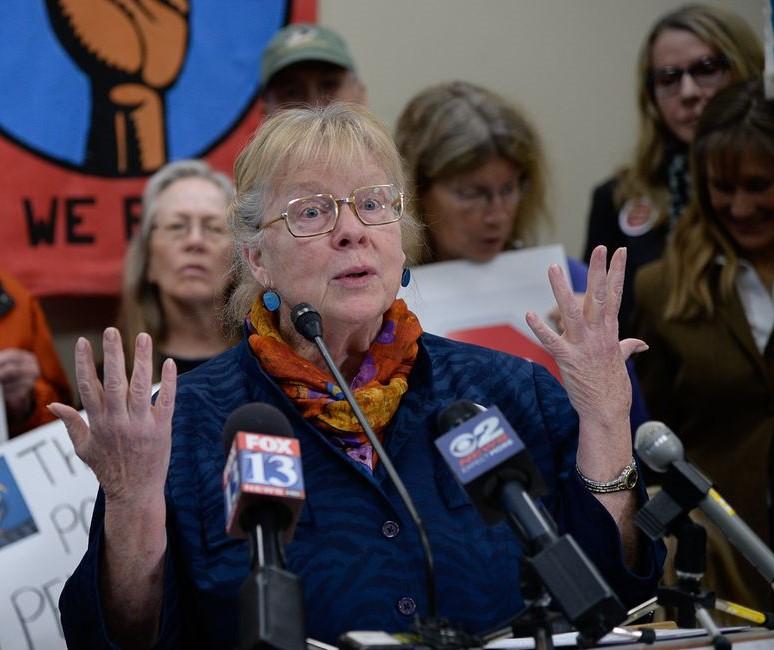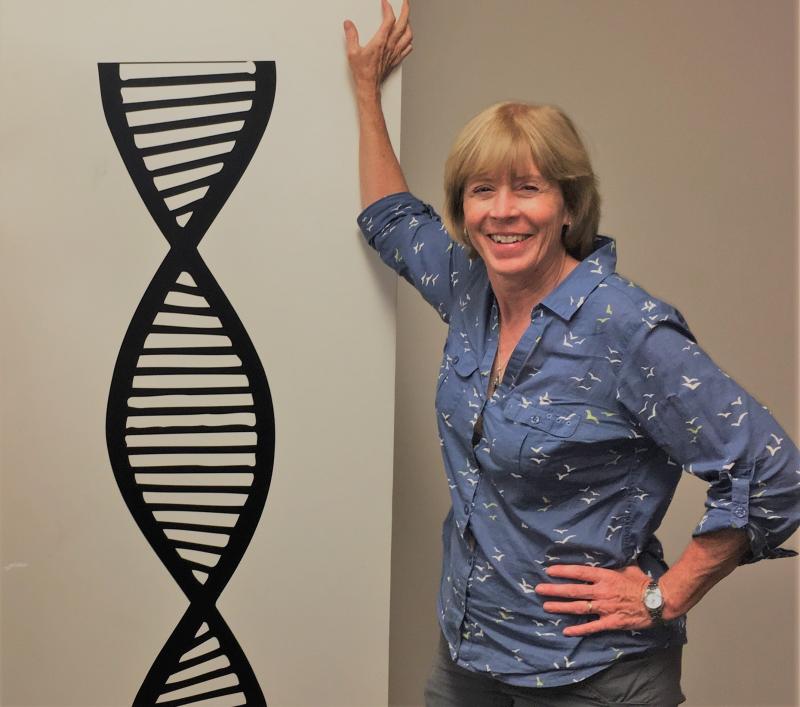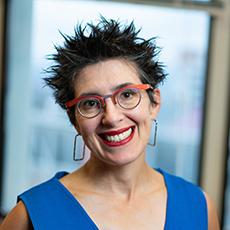The Experiences of Women at the U
"Despite accounting for over half of the college-educated workforce, women in the United States made up only 29% of those employed in science and engineering occupations in 2017" (Catalyst). Therefore, there is still a large disparity of scientific careers women get after attending college. In the Representation in Science subsection, these 4 scientists elaborate on their experiences and interpretations of female representation in STEM.
Dr. Kirtly Parker Jones, M.D.
Kirtly speaks on the gender representation among medical students and what she would specifically like to see in the future. When she first began her residency program at Brigham, the number of women in pediatrics and OB/GYN were increasing. There was still a sense that women were the minority in medicine, yet the number was increasing and this was confirmed by the fact that four out of the six residents in the OB/GYN specialty were women.
"I'd like to see more women in medicine, and right now, I think the U [of Utah] is about 50/50 in terms of medical students. And in some parts of the country, there are more women in medical school than men. But I’d like to see 50/50 and I’d like to see them equally distributed around the specialties."
Dr. Cynthia Burrows, P.h.D.
Since Cindy earned her degrees, there have been many exciting developments for women in science. Women have gone to space, figured out the shape of our genetic material, and won the Nobel Prize. As women in STEM, we now have those individuals to look up to in the struggle for equal representation. But what is the experience from someone who did not have those role models?
“When I was growing up, scientists all looked like white males...I didn't have any [women] science teachers in high school; maybe one biology professor in college who was female. Um, but no chemistry professor that's for sure...all through my education science was conducted by white males, which, you know, that's just the way it was...now though, I think that it's pretty fun that scientists can look like just about anything”
Looking back, not only have there been major changes for women in science, but also for people and women of color. These strides are now leading to much more inclusive scientific disciplines and to scientists looking very different.
Lisa M. Diamond, Ph.D.
Lisa has positioned herself as a representative of women in STEM in multiple ways. She conveyed her belief in the need to pass the torch of her work onto younger generations through her mentorship. She also noted how important it is to her that her voice and research is heard by public audiences and her students:
"Those moments [after presenting] also made me,... they sort of spoke to my political soul that if there are experiences that marginalized people are having that are not being voiced. And, I have the opportunity to amplify those voices then that's, that's activism, in addition to, scholarship."
Another notable experience Diamond shared was her impression upon others as a lesbian in STEM. People seemingly expected her to be a lesbian due to her gender studies research, but, from the responses she received from the students she taught, her being a lesbian psychology researcher had an impact upon them.
"I think visibility is just a huge thing. And, I think, being in Utah has made me very aware of it. From just the beginning of my teaching at Utah. And, even when I didn't explicitly come out to my students, given the kind of work that I do, that I was kind of known for doing research on queer topics, people just assumed I was a lesbian anyway. So students would email me and be like, “you are the first lesbian that I saw in person,” and I was like, “happy to help.” But you know growing up in big cities like Los Angeles, and then going to school in Chicago. I was always aware that gay people existed, it was just easier to see them around. When, for some of my students who grew up in Salt Lake City or who are raised in the Mormon church, they don’t see a lot of that. And I’ve realized how powerful it can be just to be out and visible. And to just kind of be your total kind of queer self. And so, if anything, over the years, I've tried to be as out and visible as I can in Utah. I do a lot of work with community organizations. I do some trainings for the veterans administration on sexuality and gender issues for the Department of Pediatrics at the hospital. For therapists guilds. I've tried to do everything that I could to raise the visibility about these issues and to make them more normal, here in this little weird pocket of the world."
It makes sense that, as a proponent of the LGBTQ+ community, Dr. Diamond aimed to be heavily involved in her Utah community. Utah is widely considered a conservative state in the United States and the Mormon religion is a significant figure in the everyday lives of Utahns. The social environment concerning the LGBTQ+ community within Utah seemingly compounds both the importance and impact of Dr. Diamond's representation of women in the STEM field.
Though Diamond was excited about highlighting the pertinent figures who helped push and angle her towards being the prominent research psychologist she is today, Diamond also stressed her personal experiences as a mentor for up and coming scholars.
"I’ve had tons [of mentees]. Probably my closest relationships are with my graduate students because that process is a 5-6 year kind of intense, working relationship. I've really, really treasured those relationships because for me the thing that really made it possible to get through graduate school was having such good relationships with my-my own mentors, and so I try to [pay it forward]."
Amy Sibul, M.S.
"The people who voluntarily opt into the community engaged learning program are much more likely to be immigrants themsevles. They are first generation women and people of color and there's data to say why that is. Folks within those populations are more likely to want to go back to their community and apply their education to invest back in their communities."
"I think there are a lot of excuses that are made...and you hear this also around people of color, that there are not candidates in that category that really meet the qualifications. We need to reexamine those lists of qualifications to see where the implicit biases are because they exists there...I also think there is a historical unrealistic expectations of academia. Where you have to live and breathe this role of [being] a professor and not have hobbies. Not present in your children's lives and everything is just high pressure. I think we do need to shift away from unrealistic expectations to healthy expectations."
Page researched and written by Shaistah Din, Lydia Hall, Cullen O'Brien, and Jack Temme.



